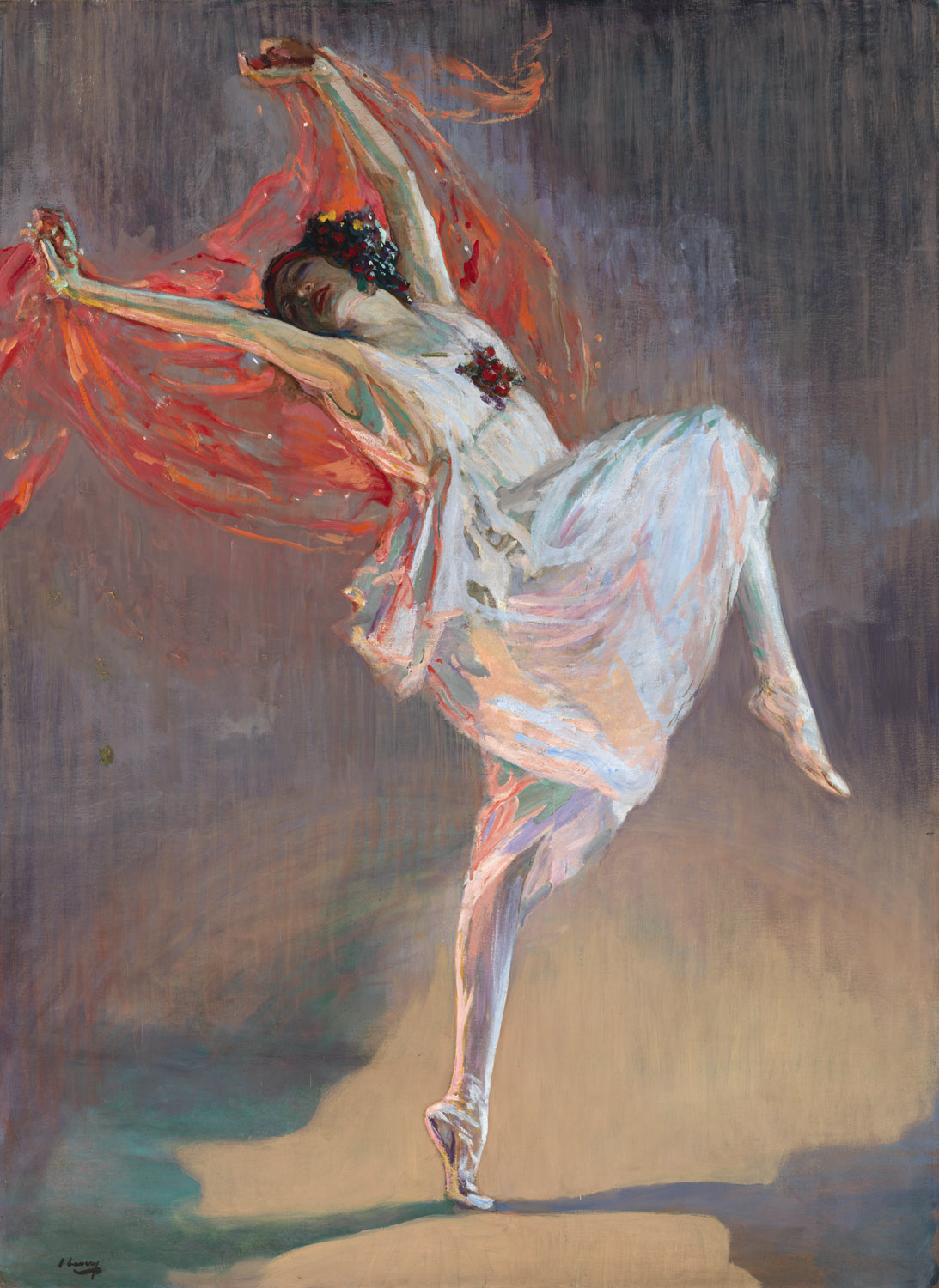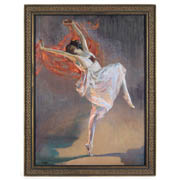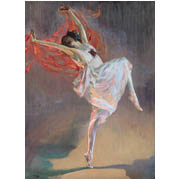Details
- Object type
painting
- Title
Anna Pavlova
- Artist/Maker
John Lavery artist
- Culture/School
Glasgow Boys
- Place Associated
UK, England, London (place made)
- Date
about 1910-11, retouched 1923
- Materials
oil on canvas
- Dimensions
framed: 2205 mm x 1700 mm x 71 mm 82500 g; unframed: 1981 mm x 1448 mm
- Description
-
After his move to London in 1896, Glasgow Boy painter John Lavery concentrated on portraiture and became one of the most sought-after society portraitists of his day. He painted many famous people, including the celebrated Russian ballerina Anna Pavlova, who made her debut on the London stage in the summer of 1910, dancing with Sergei Diaghilev’s company Ballets Russes. Lavery was commissioned to paint her head and shoulders by Bruce Ingram, editor of The Illustrated London News, to advertise the dancer’s second season at the Palace Theatre in 1911 (Illustrated London News, 22 April 1911). Lavery was worried that she would be troublesome, not turn up to appointments or arrive with an entourage. However, he recalled in his memoirs: ‘I was entirely wrong. She arrived unheralded and alone in a taxi […] For a whole morning she posed, almost without resting.’ Pavlova performed the Autumn Bacchanal, an erotic dance choreographed by Pavlova's partner Mikhail Mordkin, in slow motion for Lavery in his studio, so that he could paint her mid-movement as if dancing on-stage. ‘She came three or four times a week during her Palace engagement, and never once missed or was late for an appointment. Telegrams and letters came during the sitting, but she looked at none until the end. […] She refused all aids to comfort while posing, if she thought they would interfere with the aspect of the position I was painting’ (Life of a Painter, 1940, pp. 172-73).
As well as the commissioned work, Lavery also painted two full-length versions, one of which is now in Glasgow Museums’ collection. It was exhibited at the International Society of Painters, Etchers and Gravers in London in 1911 as Pavlova as a Bacchante. It is also sometimes known as The Red Scarf. Lavery beautifully captures the energy and abandon of the dance. Pavlova’s arms and head are dramatically thrown back. The artificial colours and shadow recreate the striking effect of theatrical lighting. A young Kenneth Clark saw Pavlova dancing in Lavery’s studio and described her as ‘a vision of grace which no one who has seen it can forget’. However, he thought the Bacchanal dance to be ‘profane’ and ‘slightly vulgar’. Indeed, the painting was criticised by some and likened to Edgar Degas’ decadent studies of dancers.
The painting gives us an insight into the creative process of the artist. Lavery made changes to the background and to the size of the red scarf over a decade after initially completing the painting around 1911. An early photograph of the painting reveals that Lavery had originally included a garlanded pillar on the left, suggesting a real theatre stage, and painted Pavlova dancing with a much larger scarf finely woven with embroidered spots as seen in contemporary photographs of the dancer performing. Technical investigation shows that Lavery applied rapid strokes and small spots of thick oil paint in yellows, pinks and reds to express the lightness and texture of the fabric. However, after exhibiting the painting, Lavery then painted out both pillar and scarf. Then in December 1923 he painted the scarf back in again, but smaller, just before the painting’s sale to Nicol P. Browne, who donated the work to Glasgow Museums. Looking closely, it is still possible to see the impression of the original scarf in the background, the yellow, pink and red spots visible beneath the grey-purple layer on top. The final painting, focusing on the passion and expressiveness of Pavlova without the distractions of a stage set, is much more dramatic and modern.
- Credit Line/Donor
Gifted by Nicol P Brown, 1924
- ID Number
1581
- Location
Kelvingrove Scottish Art


